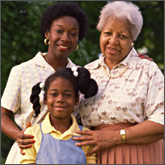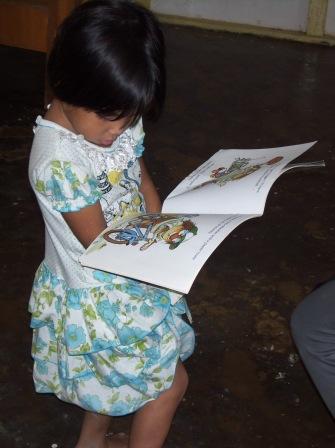James and Jennifer Harrell Center for the Study of Family Violence
Completed Research Projects
-
Little is currently known about intimate partner violence (IPV) among dating seniors. Even less is known about the risks associated with using the internet to seek relationships among this population, despite the fact that a growing proportion of older adults are using the internet for social outlets, including dating and meeting new people. Senior Surfers and Social Media builds on previous work by exploring online relationship seeking among older women in greater depth.
The first phase of the study is designed to capture the types of information older women are providing in their social networking profile and how the information shared may put them at risk online. The publicly available Myspace profiles of an ethnically diverse group of women 50 and older in the Tampa Bay region were identified. Profile contents were systematically documented, with a particular focus on characteristics associated with IPV and elder abuse.
The second phase of the study is designed to understand what online dating as older woman is like from a personal perspective by interviewing older women who use the internet to seek relationships. The interview highlights the ways in which the woman uses the internet, her positive and negative experiences with online dating, and steps she takes to minimize her vulnerability when online dating.
Together, the two phases create a picture of the online dating among older women. This information will be used to identify online dating risk and protective factors for IPV and elder abuse. It will also inform a larger national study of online dating seniors. Results will aid in the development of education and intervention strategies designed to reduce the online vulnerability of seniors who use the internet to seek relationships.
-
Little is known about older women's dating habits. Even less is known about seniors who use the internet to seek new relationships. However, several characteristics of the online medium may place older women in a vulnerable position when seeking relationships online.
This exploratory study, led by Dr. Carla VandeWeerd, examined the online dating practices of older women who use Myspace to seek relationships. Women who were listed as looking for “dating” or a “relationship” according to their Myspace page in the Tampa Bay region were randomly selected to take part in a brief online questionnaire. The questionnaire addressed internet use, adverse events experienced from dating online, and the trustworthiness of dating online among a racially diverse sample of older women.
Most women reported having more than one online account. Facebook (75.6%), match.com (71%), and eharmony (58%) were the most frequently reported. The majority (84%) participants had developed a relationship with someone they had met online. Adverse events experienced through meeting people online included financial exploitation (40%), threats (55%), and physical harm (38%). However, only 2% of women indicated feeling threatened via their Myspace account by someone they originally met in person. Among women who experienced some form of abuse from a relationship started online, only 17% reported these negative events to others, and when they did, family and friends not law enforcement were typically confided in. Despite many women reporting negative experiences, 89% women felt that the information provided by others on the internet was truthful. Through open-ended responses women expressed that online dating was preferable because it was easier to identify who was interested in a relationship and reduced mobility issues. However, open-ended responses also indicated that women were aware that online dating could be negative and result in getting hurt.
Preliminary findings indicate that many women seeking relationships online experience negative outcomes. Furthermore, women experiencing outcomes such as financial exploitation, threats, or physical harm are unlikely to report these incidents to law enforcement. Future studies should examine the protective and risk factors associated with online dating in order to develop and online dating toolkit.
-
In child maltreatment cases, dependency mediation is an alternative to settling the case in court. The use of dependency mediation (DM) began in the 1980s, in an effort to increase the involvement of parents and children in case planning, and to assist the courts in the settlement of cases with child maltreatment issues. Although DM has been utilized in a number of states, it has not been well-funded or uniformly implemented in many places.
The Harrell Center received funding to conduct an 18-month prospective study of DM in several Florida counties. The purpose of the study is to better understand the relative costs and benefits of utilizing DM versus the traditional settlement process. Because dependency cases, and the probability of a successful outcome, are influenced by a myriad of factors, we will examine contributing factors in five categories: child characteristics, parental characteristics, case characteristics, mediation characteristics, and court characteristics. Data will be collected through various methods, including in-person interviews, surveys, and records review. The findings from this study will generate recommendations for Florida in regard to its pursuit of mediation as a more common strategy for the resolution of dependency cases. Drs. Coulter, Vandeweerd and Pracht will conducted this evaluation.
-
Family violence often includes intimate partner violence (IPV) and child maltreatment (CM). While integrating program responses is dependent on service providers’ awareness of both IPV and CM dynamics, knowledge on these professionals’ attitudes and perceptions about the IPV-CM's overlap is limited.
As part of the Child Welfare/Domestic Violence Task Force of Hillsborough County-Florida, the Harrell Center conducted a study to examine the perceptions of service providers about the dynamics of IPV and CM. In total, 146 child welfare, IPV and child protection investigation professionals in Hillsborough County completed an online survey.
The study found that participants believe victims stay in abusive relationships for several reasons: 85% believe they stay fearing their children’s removal upon disclosure; 77% believe they stay because of economic dependence; only 30% think they stay because battered parents believe children need their father/mother.
Notably, over 75% think reporting CM damages their relationship with the victim, and 52% believe it further traumatizes children, most of the time. In contrast, 89% believe CM reporting protects children the majority of the time or more. Most participants reported higher confidence in their knowledge and capacity to identify or respond to CM than IPV. These study findings shed light on the difficulties of integrating IPV and CM service agencies, and the need to better equip service professionals with the knowledge and resources to best serve battered parents and their children, as well as maltreated children and their parents.
-
Each year, 4.8 million US women suffer from intimate partner violence (IPV), making it likely to be encountered by physicians, nurses and other health providers in the clinical setting. Physicians and other health service providers have a unique opportunity to connect and intervene with IPV victims, as the health care setting could be the only access point IPV victims may have to seek, be offered and receive help. Still, there is limited scientific evidence available on the effectiveness of screening, interventions to prevent IPV, improved health outcomes for those involved, and steps taken by health providers after a patient is screened for and identified as an IPV victim.
In collaboration with the Family Violence Prevention (FVP) Forum at the American Public Health Association (APHA), the Harrell Center conducted a pilot study to identify the post-IPV screening steps taken by health providers, medical office, clinic and hospital personnel. An online survey was distributed among all APHA-FVP Forum members (i.e., around 1,000 physicians, nurses, social workers, psychologists, public health practitioners, physical/occupational therapists, midwives, dentists, and others) to examine their actions, opinion(s) and knowledge on the services available for IPV victims at healthcare settings.
This study found that reinforcement of the need for consistent and universal IPV screening policies is still needed. While many health care agencies have IPV resources (i.e., procedures, training and protocols) for responding to IPV in the workplace, many members of this specialized FVP Forum are still working in agencies that do not. Additional attention is greatly needed around the issues of effective screening, knowledge, training, resources, and service provision related to IPV across health care settings.
-
ChildNet and SafeNet are collaborative programs that offer coordinated legal and social services to low-income victims of domestic violence and their children in Hillsborough and Pasco Counties. Through the coordination of legal and social services, the programs aim to help victims and their children leave violent domestic situations and establish stability in their lives so that they do not return to the violent situation.
Since 1997, the Harrell Center has conducted ongoing, yearly evaluations of ChildNet and SafeNet. To measure the effectiveness of the program in helping the clients achieve stability, client outcomes are examined in the areas of employment, education, transportation, housing, child care, child school, child health, client health, and safety. Results of the evaluations show that clients are making progress in many areas of their lives. For example, an increased percentage of clients report being employed at the end of the program and more clients feel that they are adequately able to support themselves and their families. Clients also express decreased difficulty with transportation and their children experience decreased problems with peers, emotions, and behavior. Results in other areas indicate the need for continued attention. These include a high percentage of clients who continue to have credit and financial problems and an increased difficulty finding suitable housing. One of the most disconcerting results is that more clients report homelessness due to domestic violence throughout the program than at the beginning. Additional analyses and continued exploration of these areas is ongoing.
Complete results of the evaluation are presented to both ChildNet and SafeNet Collaboratives to help them better understand both areas of program success and areas in which clients are experiencing difficulties or that need improvement.
-
Hillsborough County is one of 15 communities across the country awarded a President’s Family Justice Center Initiative grant. The grant, administered through the U.S. Department of Justice, Office on Violence Against Women, provides for the planning, development, and establishment of comprehensive domestic violence victim service and support centers. The Hillsborough County Family Justice Center opened in the summer of 2006 and brought together a variety of agencies, including emergency services, victim advocacy, legal services, counseling, medical services, and child care to provide services to victims of domestic violence in one location.
The Harrell Center is currently conducting a community needs assessment for the Family Justice Center to determine the availability and comprehensiveness of currently available domestic violence services, additional services that may be necessary through the Family Justice Center, and opinions on the “one stop shopping” model of service provision. To complete the needs assessment, the Harrell Center is conducting interviews and focus groups with individuals who are or know victims of domestic violence as well as key community stakeholders, including domestic violence-related program and service providers in Hillsborough County. Dr. Coulter, Dr. Vandeweerd and Ms. Estefan have been involved in this needs assessment.
-
Violence in the workplace represents a global workplace health hazard. Rates of nonfatal assaults in the U.S. are highest in the social and health services industries, including hospitals. Risk factors, in addition to female sex, include workplace environmental factors such as poor visibility, working alone, and shift work. It has been proposed that perception of fear by the potential victim is often the best predictor of subsequent violence. The effectiveness of preventive interventions has not been well-studied.
The Harrell Center, in conjunction with the Departments of Epidemiology and Psychology, conducted a cross-sectional study to collect preliminary data and evaluate the feasibility of a larger study of workplace violence in the health care industry. This study focused on nurses in one Florida hospital in 2005. Data were collected by self-administered, anonymous questionnaires on demographics, work history, environment, perception of safety, physical and verbal assaults, health impact and preventive interventions.
198 surveys were completed and returned. Forty-eight respondents (24.5%) reported physical violence and 103 (52.1%) reported verbal violence at least once in the last 12 months. The majority of both physical and verbal assaults came from patients, although 32 respondents reported verbal assaults by a co-worker. There was little association between workplace characteristics such as security monitors, routine patrols, and lighting with risk of assault. There was some suggestion that increased hours of patient contact and non-daytime shifts increased risks of physical assault. Fear of working alone was predictive of verbal assaults (OR=4.2, 1.2-15.3). The majority (over 85% of respondents) reported having violence prevention training, policies and procedures, and they agreed that reporting physical assaults was encouraged. Nevertheless, 32% of those reporting physical assaults believed it could have been prevented. This study indicated that nurses experience high levels of preventable verbal and physical abuse, despite violence prevention policies and practices in place. Drs. Coulter, Heather Stockwell and Paul Spector collaborated on this research.
-
The Harrell Center conducted a study to investigate whether the use of specialized domestic violence courts improved the situation for women victims in Florida. The perceptions of victims, judges, attorneys, courtroom police and victim advocates were examined, as well as domestic violence education for professionals in both the general and specialized courts. Victims describe similar problems in both general and specialized courts, and specialized court personnel were not more likely to receive domestic violence education than general court personnel. This research suggests the need for improved training of court personnel, as well as improved support and safety for victims. The Harrell Center recommends further study on outcomes of specialized and general courts, particularly in regards to operational management, judicial caseloads and community collaboration.
-
The Harrell Center is interested in what factors influence a domestic violence victim's decision to call the police. Factors such as duration of abuse, education level of the victim, and the victim's affective response to the violence have been associated with the victim's decision to call the police.
The Harrell Center conducted a study that examined the interaction between domestic violence victims and law enforcement. Participants of the study, women at a large domestic violence shelter, were given questionnaires as they entered the shelter. The most striking result was that almost half of the women who enter the battered women's shelter, a place that is usually limited to more serious cases of abuse, did not seek help from the police, and that arrests were made in only 25% of the cases where victims called police.
Results of this study indicate the need for further systematic training for police officers and policy development that provides law enforcement officers a structured format for addressing domestic violence cases.
-
The Louis de la Parte Florida Mental Health Institute (FMHI) Research Library of the University of South Florida, in partnership with The Harrell Center, conducted a survey of all libraries in the state of Florida to determine the status of their information on domestic violence. An analysis of the data indicated that a large number of libraries had inadequate information on domestic violence. Some libraries had a good collection of books, but most had a limited supply of books and other materials on family violence.
Sixty-four percent of library staff reported that they did not have enough information on domestic violence. Eighty-nine percent of libraries requested more information on domestic violence if it was provided free or at low cost. Only 21% reported that they had any guides to services and 17% had brochures for victims of violence. Information on domestic violence was requested in the form of books, brochures, facts, and guides to services. Eighty percent were willing to house a print collection on domestic violence in the library. In addition, 29% of the libraries stated an interest in workshops to create awareness about domestic violence locally.
In response to this need, the Harrell Center contacted and received information from nearly all of the domestic violence shelters serving various counties in Florida. This information in the form of fliers, brochures, palm cards on shelter services, legal information on how to obtain injunctions, and a recommended list of current books, articles, and videos was sent to all libraries in Florida.
In 2006, Ardis Hanson, FMHI library director, contacted collaborators in Central America, Aruba, and other countries and joint library projects are now being planned. These projects will compare data in these countries with new data in Florida to develop intervention programs.
-
The results from a literature review demonstrate that a relationships exists among welfare, domestic violence and employment, however this relationship is often complex. Through a grant from the Department of Justice, the Harrell Center has examined the relationship between the experience of domestic violence and barriers to employment and self-sufficiency among welfare recipients. This study has provided a unique opportunity to quantitatively and qualitatively track the experiences of welfare recipients as they transition off welfare and initiate and sustain employment.
88% of women in this research study experienced psychological or physical domestic violence. 60% reported experiencing a level of domestic violence moderate or higher in frequency. Women who had experienced past domestic violence and were in a current relationship were almost four times more likely to have experienced domestic violence in the past 12 months. However, women with technical training were 2.5 times less likely to have experienced recent violence.There were moderate to strong correlations between social support, employer support, mental health, and parenting stress for women regardless of current relationship status. Physical health, on the other hand, was correlated with social support and the ability to deal with parenting stress only for the group not in a current relationship. The effects of domestic violence are apparent in the relationship of the three intercorrelated variables (social support, mental health, and parenting stress) and their negative correlations with both past and current violence (for women in a current relationship). Increasing age is associated with more negative physical health, and physical health is positively correlated with having had education in the previous year. Race was an important variable in this study. For single women not in a current relationship, being African-American is positively correlated with social support, mental health, and low parenting stress, as is having a suitable home. Being African-American also predicted less parenting stress, as did having at least a technical education or skill while having domestic violence in the last 12 months predicted higher parenting stress.
Further research is needed to better understand how state welfare programs can assist women who experience violence in becoming independent and self-sufficient by entering and remaining in the workforce.
-
Representatives of the Harrell Center, both students and faculty, traveled twice to the Dominican Republic and met with various officials about ways to improve the response to domestic violence in the country. The representatives met with the Office of Women's Health (Secretaria de Estado de la Mujer), a government agency that plans national plans for domestic violence, and with Profamilia, a non-government group providing family planning and medical care, and with other groups. The meetings helped the Harrell Center representatives gain a better understanding of the needs of victims of domestic violence in the Dominican Republic, national policies and the services that are available to victims.
Following the meetings in Santo Domingo, the group traveled to the city of Piedra Blanca, where a local task force has begun planning for the first domestic violence shelter in the country. The Piedra Blanca project involves transforming a house into a domestic violence shelter. Representatives from various agencies in the U.S. such as the Spring of Tampa Bay provided technical assistance to the local planning group. The domestic violence shelter is a pilot project staffed and operated by local professionals. Following these trips a group from the Dominican Republic came to Tampa for a weeklong visit to learn about the service network here, with particular focus on the court system, offender treatment programs and victim service agencies.
-
This Pan American Health Organization funded research involves intervention with teachers, children and parents in Medillin, Colombia. Teachers focus on teaching non-violent conflict resolution strategies while the interventions with families focus on reducing family violence in high-risk families identified at school. Drs. Coulter and Liller provided assistance in the development of the evaluation of outcomes of the program, including instrument selection, intervention methodology and data analysis.
A second research effort, funded by the Colombian government in Medellin, supports an epidemiological study of the incidence and prevalence of family violence in Medellin. Data collection has just been completed and specific analyses begun. The Harrell Center and the University of Antioquia plan to replicate this epidemiological study in other sites both in the U.S. and Colombia.
The University of South Florida and the University of Antioquia have developed a formal collaboration between the two universities, and together will apply for further grants to establish an International Center for the Study of Family and Community Violence in the Americas. This will form the basis for ongoing research efforts between the two countries and for other Central and South American studies. Drs. Coulter and Luis Fernando Duque have been collaborating together on this partnership.
-
Job Experiences in Nursing Homes, funded by the Sunshine Education and Research Center, is a pilot study seeking to explore the extent to which physical, psychological, or sexual aggression takes place against nursing home staff by residents or co-workers, and to describe the context of these incidents by conducting semi-structured interviews with nursing home staff throughout the United States Of particular interest is the determination of the extent to which co-worker aggression occurs within the context of personal relationships, and to identify the contextual factors that contribute to these incidents and their outcomes.
Since very little is known about the context in which aggression and violence against nursing home staff occurs, this qualitative approach will allow a victim-based perspective to establish the scope of the problem, and its contributors and outcomes. It will also solicit intervention recommendations from victims of violence. This application provides rare insights for the context of exposure to work-related violence among nursing home staff. This information will contribute to the National Institute for Occupational Safety and Health research priorities. Drs VandeWeerd and Coulter have extensive experience in the field of relationship violence both as researchers and educators, and are the CoPIs of this study.
The significance of the proposed study is that it is a direct qualitative assessment of nursing home staff exposure to violence and aggression. Whether in terms of its physical, psychological, or economic impact, workplace violence is a major concern amidst the healthcare industry, especially for workers in the nursing home setting. To date, no study has examined the context and effects of violence and aggression between worker/co-worker or worker/resident dyads in the nursing home workplace.
-
The Hillsborough County Domestic Violence Intervention Program is administered through the 13th Judicial Circuit Court System. The program is a large one with 236 offenders on average entering the program per month, including felony and misdemeanor offenders, diversion cases, or other referrals from criminal court. To date, the program has enrolled 19,999 offenders.
When offenders are convicted and sentenced to intervention programs or placed on diversion, they are referred to community agencies for assessment. The assessment identifies the type of program and intensity of the intervention needed for each offender. The model of intervention services which has been adopted is an innovative one based on the state-mandated psycho-educational model, but with additional provisions for offenders with special needs, such as offenders with a history of severe violence, serious mental illness or substance abuse issues.
The role of The Harrell Center is to longitudinally assess the efficacy of the Hillsborough County Domestic Violence Intervention Program as a means to better refine the intervention process, particularly for programs for offenders with special needs. Using Florida Department of Law Enforcement arrest records, the Center examines re-arrest rates of domestic violence offenders for both domestic violence and other crimes. Current data indicate high levels of effectiveness with low drop-out rates and low re-arrest rates for offenders that have completed Hillsborough County’s program compared to those that did not complete the program.
These data provide support for this program which is unique for tailoring the intervention to the offender’s needs. Dr. Coulter, Dr. Vandeweerd, Ms. Estefan, Ms. de la Cruz and Mr. Dixit have been involved in this project.
-
Approximately 13% of the U.S. population is over the age of 65 and it is projected that this will more than double by 2050, creating a new era of aging in America that will present new challenges and opportunities for ensuring a healthier, more vital older adulthood. In order to address these challenges and opportunities, it is vital that we understand the factors influencing successful aging through large scale population studies that focus on the needs of the aging population.
To this end, USF Health partnered with The Villages, an active, 55 and older community in central Florida, to conduct a formative assessment of factors related to residents’ health and quality of life. The Villages Project constitutes the largest comprehensive health survey of older adults ever undertaken. The exploratory study employed a two-phase, cross-sectional study design, utilizing a mixed-methods approach. In Phase I, focus groups were utilized to gather community input on salient issues related to quality of life and health as well as to inform survey design. Phase II included the administration of the quantitative survey to 88,527 older adults living in The Villages. The domains of the survey were: a) health behaviors; b) mental health; c) quality of life; d) access to health services; and e) social support/cohesion. These domains included questions aimed at assessing seniors perceptions of their safety and experience with harm.
Results from this study provide a foundation for more detailed examinations of potential models for successful aging both in The Villages as well as older adult populations in general. Better understanding of the physical, social and psychological dimensions of successful aging will assist in ensuring informed, cost-effective prevention and treatment services designed to reduce health complications and improved quality of life, including as a center focus, ways in which abuse and neglect in late life may be reduced or prevented. As The Villages Project moves forward, data gathered will have the capacity to impact essential innovations in multiple aspects of health for older adults while also contributing to the advancement of scientific knowledge in this area.
-
As part of a Community Initiative Program, the RIWATCH organized "Joy of Reading" workshops in association with Lohit Youth Library Network to promote good reading habits among the school children of different schools in and around Roing, Lower Dibang Valley, India. The Coordinator Satyanarayanan, Mundayoor stressed upon the teachers to adopt play way method of teaching, story-telling and use low cost teaching aids to make learning more joyful and enjorable. The workshop session included story-telling, story-reading and poetry recitation. The children found the poetry quite interactive and stimulating. Around 200 children of Government Middle School and Future Generation School from abali and Hornbill School and Anakum Academy from Roing benefited from the program.
At the initiative of RIWATCH, a "Chinzigoma Library" has been started at Abali village. About 30 readers, including school dropouts, visiting the library every day is quite encouraging. The RIWATCH proposes to extend the reading campaign to other schools in Dibang Valley region this year.
















